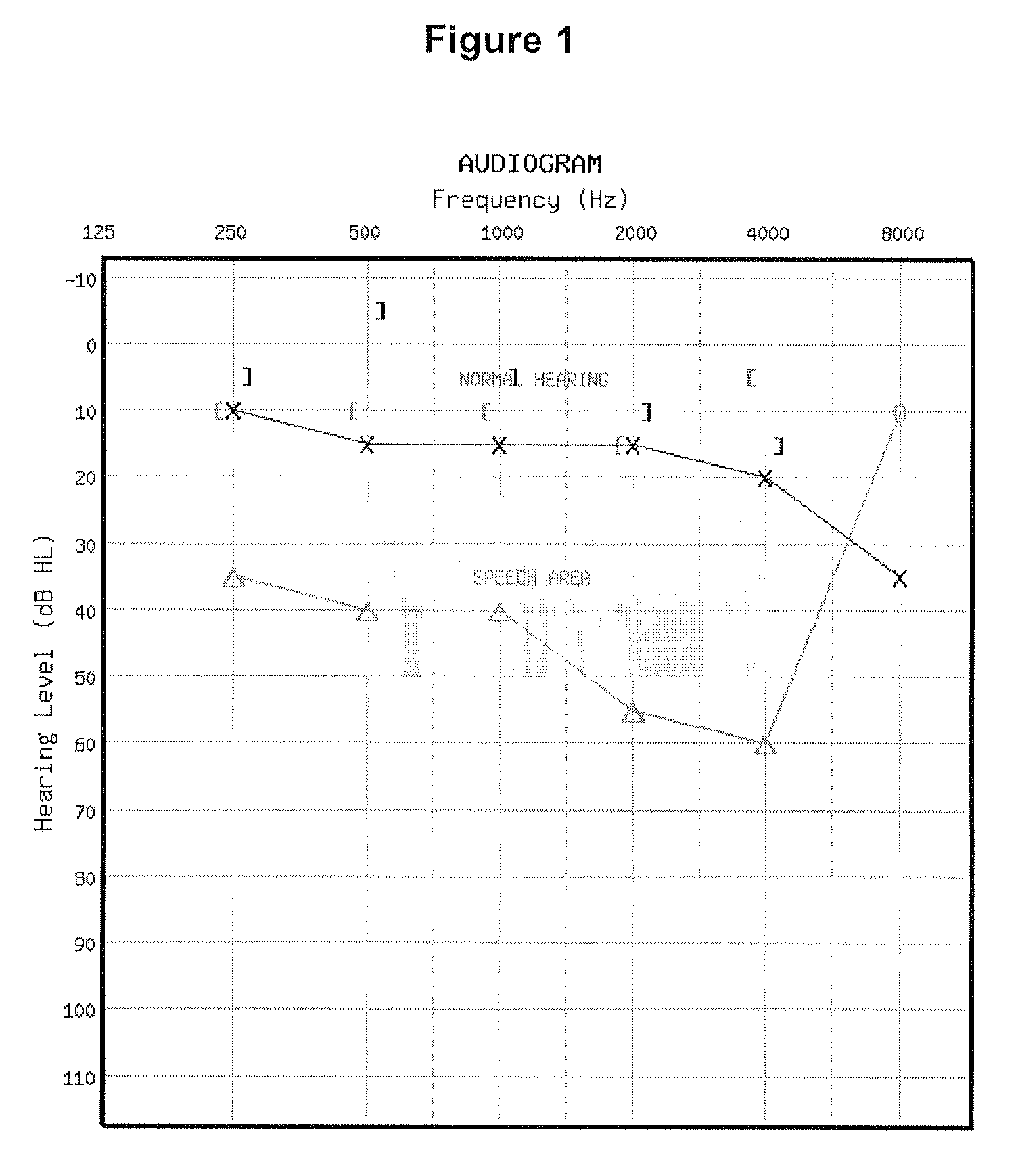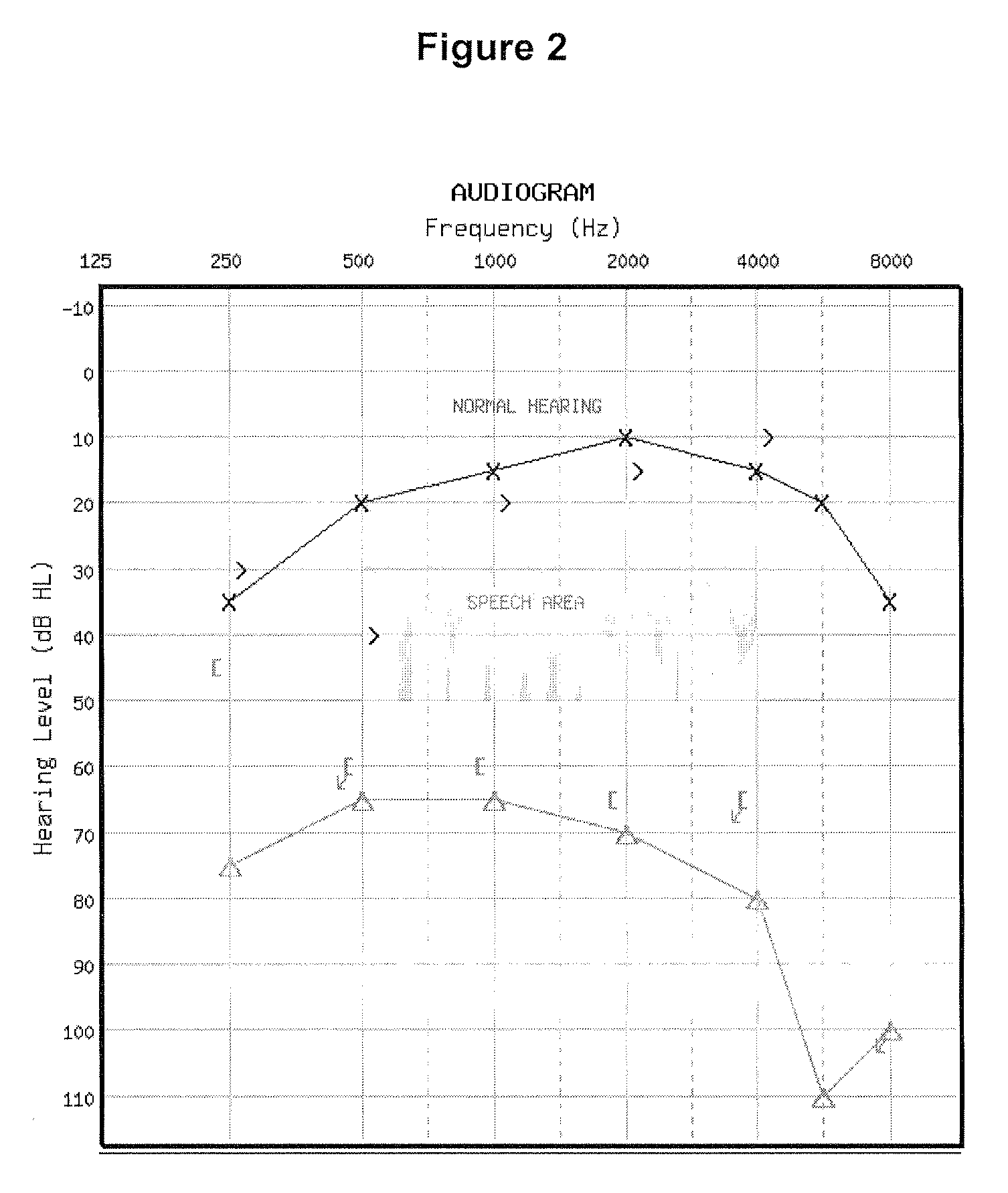Audiogram classification system
a classification system and audiogram technology, applied in the field of audiograms, can solve the problems of difficult to describe the site of lesion for this audiogram, mixed hearing loss cannot be completely ruled out, and the difficulty of audiogram classification
- Summary
- Abstract
- Description
- Claims
- Application Information
AI Technical Summary
Benefits of technology
Problems solved by technology
Method used
Image
Examples
Embodiment Construction
[0064]The following detailed description is to be read with reference to the drawings, in which like elements in different drawings have like reference numbers. The drawings, which are not necessarily to scale, depict selected embodiments and are not intended to limit the scope of the invention. Skilled artisans will recognize that the given examples have many alternatives that fall within the scope of the invention.
[0065]The invention provides an improved audiogram classification system that maximizes the likelihood that the selected category agrees with audiologists. The classification also ignores local irregularities that audiologists typically ignore. The classification system is useful for grouping audiograms to facilitate studies of relationships between audiogram configurations and ear disease. The classification system also produces a concise verbal description of the hearing loss to facilitate communication among professionals and between clinicians and patients. The class...
PUM
 Login to View More
Login to View More Abstract
Description
Claims
Application Information
 Login to View More
Login to View More - R&D
- Intellectual Property
- Life Sciences
- Materials
- Tech Scout
- Unparalleled Data Quality
- Higher Quality Content
- 60% Fewer Hallucinations
Browse by: Latest US Patents, China's latest patents, Technical Efficacy Thesaurus, Application Domain, Technology Topic, Popular Technical Reports.
© 2025 PatSnap. All rights reserved.Legal|Privacy policy|Modern Slavery Act Transparency Statement|Sitemap|About US| Contact US: help@patsnap.com



